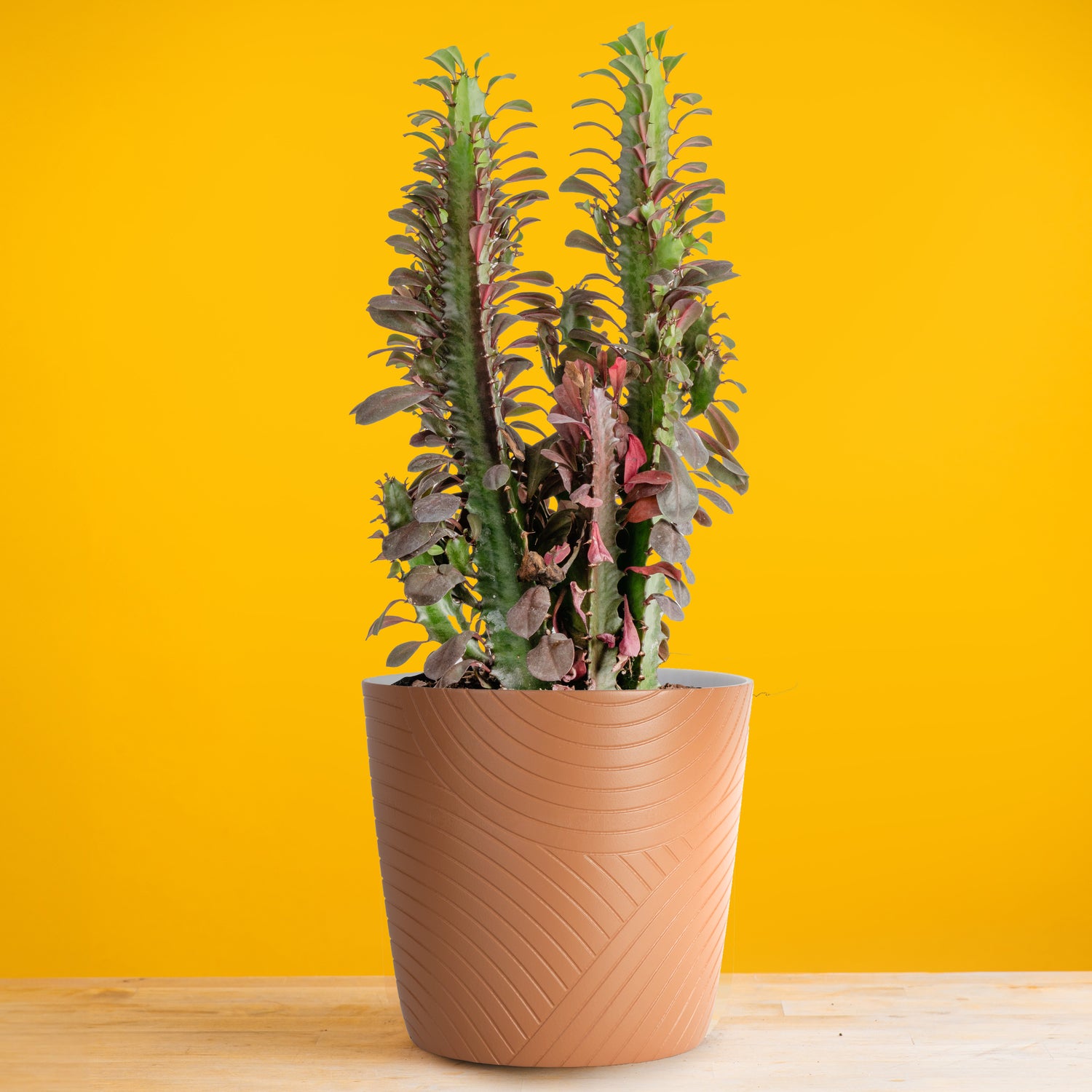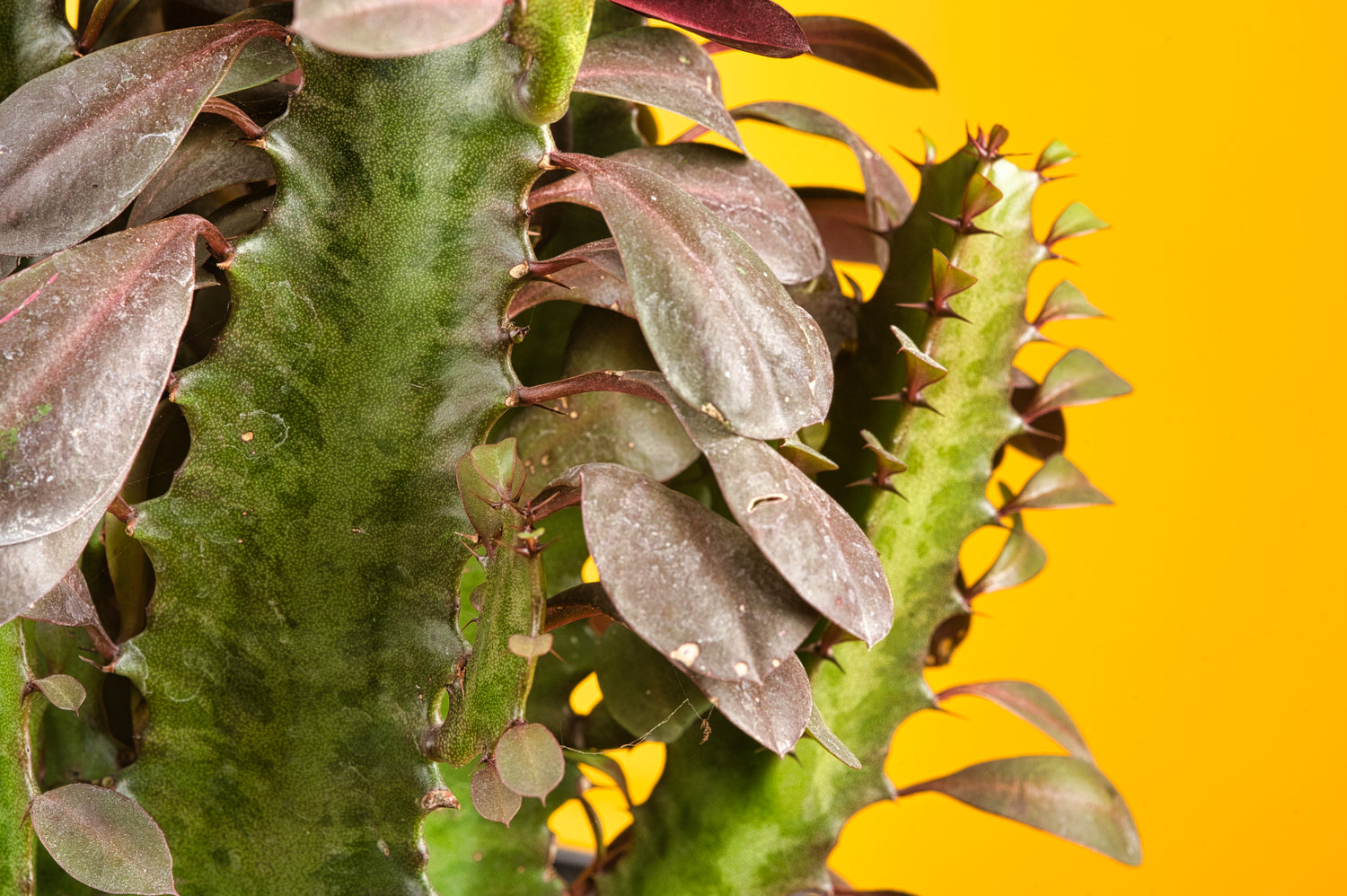Euphorbia Trigona Red Cactus
-
Detail
Looking for a large, low-water, easy-care houseplant? Euphorbia trigona Rubra (also called Red African Milk Tree) may be the plant for you! This stunning succulent features a series of thick reddish-purple stems that store moisture. This helps it to survive if you forget to water it for a few weeks. It grows upright, so you can enjoy it in relatively narrow spaces like bright corners. This beautiful succulent is shipped fresh from our farm, direct to your door and price includes shipping, handling, and a heat pack if necessary.
- Can grow more than 5 feet tall over time
- Beautiful addition to bright desks and tabletops
- Lives for years with good care and tolerates medium or bright light
[bio]
Plant Bio
Euphorbia trigona Rubra
Native to areas of Africa, this large succulent is commonly seen as a houseplant thanks to its easy-growing nature. It adds a distinctive look to homes or offices thanks to its architectural stems, which are lined in small young leaves at the top. It does produce small spines along the edges of the stems, so it’s best to keep this low-water houseplant out of high-traffic areas.
Like most succulents, Euphorbia trigona Rubra wants as much light as it can get. It grows best within 2 to 3 feet of an unobstructed east- or west-facing window, but also grows well under plant lights. It prefers average household temperatures and tolerates low humidity levels. Water as the three-quarters or so of the potting mix dries to the touch. Avoid overwatering and keep it away from hot or cold drafts.
Note: This plant may have some natural degree of toxicity and may cause discomfort or illness if ingested. Additionally, exposure to the sap of this plant may cause discomfort to individuals with a sensitivity to it upon contact. It is grown for ornamental purposes and not intended for human or animal consumption.
-
Customer ReviewsNo comments





